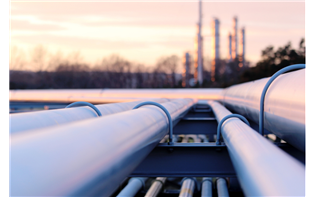India’s energy landscape will see a drastic change only if there is an enhanced focus on developing a robust pipeline network, creation of suitable infrastructure and adequate support in terms of favourable policies being introduced at an accelerated pace writes DR. RC MANSUKHANI.
As India moves on an aspirational path of steadfast growth and expansion, energy consumption patterns are also changing at a rapid clip. While coal is the primary source of power generation in the country, oil & gas is the industry’s mass provider. These sectors are significant for an economy, as the economic growth and energy consumption are directly proportional.
Besides being the third-largest consumer of energy, India is also the third-largest consumer of oil in the world after China and the US. And since 2011, the country has emerged as the fourth-largest liquefied natural gas (LNG) importer after Japan, South Korea, and China. Additionally, the country is gradually increasing LNG imports as domestic natural gas production has declined and domestic consumption increased. However, India’s LNG imports’ continued growth is dependent on the timely completion of natural gas pipeline networks. As of February 1, 2020, India had a natural gas pipeline network of 16,981 km with a total carrying capacity of 387 MMSCMD.
Following the inking of the Paris Agreement in April 2016, India is well on its path to becoming an environment-friendly nation with a transition towards cleaner fuels and renewable energy. However, to become sustainable, the country has to develop its transportation infrastructure even further. India has struggled to boost its use of gas, which produces fewer greenhouse emissions than coal and oil as several industries and towns are not linked to gas pipeline networks.
Pipelines are the most convenient way of transporting oil & gas amongst all the available options. Globally, pipelines are the most preferred mode of transportation of goods and minerals across all terrains. Transportation of oil & gas by pipelines is reported to emit 61-77 per cent lesser greenhouse gases than transportation through rail over long distances. Moreover, oil & gas transportation by pipelines for both upstream and downstream will result in increasing the sectors’ contribution to the national GDP.
And, therefore, the pipeline infrastructure is evolving across the world. At present, the development of pipeline infrastructure for the oil & gas sector is driven purely by demand. India is not just transitioning into an energy state, but also leading in that segment. Its focus on a gas-based economy and the goal of ‘One Nation, One Gas Grid’ would help in this shift, which is also crucial for the Aatmanirbhar Bharat initiative. To achieve its targets, the government is taking policy measures to increase the share of natural gas in India’s energy basket from the existing 6 per cent to 15 per cent by 2030.
As of February 2, 2020, India reported having a total crude oil pipeline of 10,419 km and an additional 18,169 km of pipes laid for transportation of crude oil products. The country currently has a pipeline infrastructure of over 45,000 km, including both oil & gas pipelines.
The much delayed 450-km Kochi-Mangaluru natural gas pipeline project was inaugurated recently by Prime Minister Narendra Modi and is now ready for commissioning. This pipeline will supply environment-friendly and affordable piped natural gas (PNG) to households and compressed natural gas (CNG) to the transportation sector. This project will positively impact the economic growth as well as facilitate the ease of living for millions of people in the southern states of Kerala and Karnataka.
According to Prime Minister Modi, in the next five to six years, India will double its existing pipeline network.
The first interstate natural gas pipeline of the country was commissioned in 1987, and by 2014, India had 15,000 km of natural gas pipeline built. As of now, there is over 16,000 km of new gas pipelines being executed to achieve the target of increasing the contribution of gas in the country’s fuel basket. Furthermore, the country has remained steadfast in its commitment to invest in cross-border pipelines to ensure safer and faster transportation of imported gas.
India’s energy landscape will see a drastic change only if there is an enhanced focus on developing a robust pipeline network, creation of suitable infrastructure and adequate support in terms of favourable policies being introduced at an accelerated pace.
Dr. RC Mansukhani is Chairman, Man Industries India Ltd



Leave a Reply
You must be logged in to post a comment.